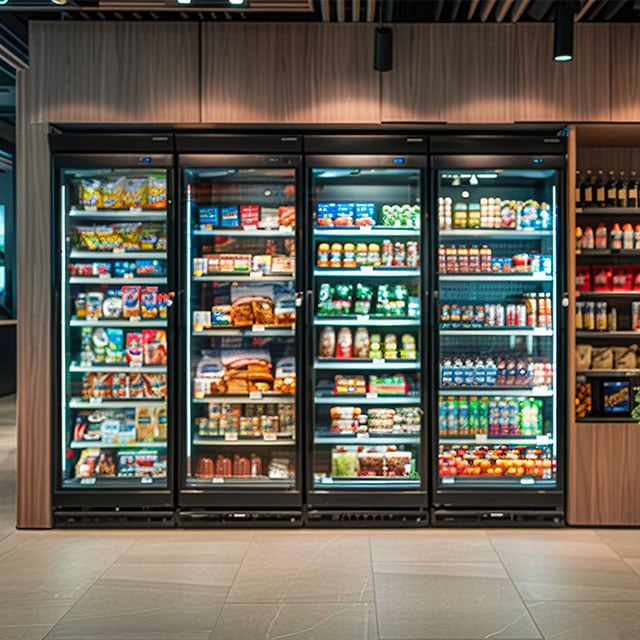Increasing Interest in Hydrogen in Canada and Alberta
Hydrogen has gained the attention of Canadian policy makers and industry players. Notably, the Canadian government announced in June 2020 an upcoming national hydrogen strategy, and the Government of Alberta unveiled its Natural Gas Vision and Strategy in October 2020, in which hydrogen plays an important role. Alberta's Industrial Heartland (AIH), with its existing related infrastructure and industrial development, is well-positioned to play a foundational role in the further development of Canada's hydrogen economy.
In our prior post, Hydrogen 101: Basics of Hydrogen Supply Chains, we explained the fundamentals of hydrogen supply chains. We also explored the national hydrogen strategies of Germany and the EU, Japan and South Korea, and Australia in a series of prior posts. As Canada and Alberta develop their respective hydrogen strategies, these posts set the stage for understanding key themes of hydrogen supply chains.
As part of Alberta's Natural Gas Vision and Strategy, Alberta seeks to engage in large-scale hydrogen production with carbon capture, utilization, and storage (CCUS) through the deployment of various hydrogen uses within the province by 2030. By 2040, Alberta aims to export hydrogen nationally and globally. As part of our New Energy Economy Series, we commented on Alberta's Natural Gas Vision and Strategy in a previous post.
The Natural Gas Vision and Strategy was followed by the Alberta Petrochemicals Incentive Program (APIP), an incentive program aimed to stimulate petrochemical industries, including the production of hydrogen. For full details on the APIP, please see our post, Alberta's APIP Aiming the Province to Petrochemical Facility Leadership.
Alberta Industrial Heartland as Canada's First Hydrogen Node
On November 16, 2020, the Transition Accelerator released its final report, Building a Transition Pathway to a Vibrant Hydrogen Economy in the Alberta Industrial Heartland (the "Report"). The Report is the culmination of the work of the Alberta Industrial Heartland Hydrogen Task Force, a multi-disciplinary group led by five municipalities forming the AIH: the City of Edmonton, the City of Fort Saskatchewan, Strathcona County, Lamont County, and Sturgeon County.
The Report outlines how to establish a hydrogen economy in Canada, recommending a focus on sub-regional hydrogen nodes. These are municipalities and specific transportation corridors with reliable supplies of low-cost hydrogen, significant consumption markets, and cost-effective means to connect the two. Each node will aim to develop economically self-sufficient local hydrogen economies, which can then be connected as national and global hydrogen sectors grow. The Report hails the AIH as a prime location for Canada's first hydrogen node.
AIH Currently Produces Hydrogen and Has Existing Distribution and Sequestration Infrastructure
The AIH is an excellent candidate for Canada's first hydrogen node because it currently produces about 2.25 kilotonnes of hydrogen per day, has an operating hydrogen pipeline in the ground, as well as two carbon dioxide pipelines. In addition, the companies active in existing hydrogen uses are located in proximity to one another, and the AIH region contains geological formations suitable for CCUS, which is key for most blue hydrogen production.
While the majority of hydrogen currently produced in the AIH is grey hydrogen, there are three facilities producing blue hydrogen: the Shell Scotford Refinery, the Northwest Refinery, and the Nutrien fertilizer plant. Roughly two-thirds of the produced hydrogen is currently used as feedstock for upgrading and refining bitumen/crude oil, with the other one-third is sold on the open market for other uses such as fertilizer production.
In short, the AIH already has in place significant hydrogen production at low cost and existing distribution and sequestration infrastructure.
Demand-Side Policy: "energy systems are driven by demand"
As noted in the Report, demand ultimately drives an energy transition. There must be adequate hydrogen demand to support production and infrastructure costs. The Report identified three sectors that could provide the necessary hydrogen demand to realize a hydrogen node in the AIH:
- Heavy transport: This category is primarily made up of buses and freight vehicles, ideally "vehicles that use a lot of fuel", which are part of centralized fleets that predominantly use the same routes and/or return to the same depot. The Report analyzed three major highways, finding an average of 4,000 to 10,000 trucks per day using the Edmonton Ring Road, 4,500 to 8,000 trucks per day using Highway 2 between Edmonton and Calgary, and about 1,000 trucks per day using Highway 63 to Fort McMurray. Highway 2 alone has the potential to create hydrogen demand of 93 tonnes per day, enough to support a number of hydrogen fueling stations. As noted in the Report, hydrogen use in heavy transport can reduce existing greenhouse gas emissions by 80 to 95 percent, and depending on the cost of getting hydrogen fuel to fueling stations (i.e., by pipeline or truck) could even reduce fueling costs in the future as compared to diesel.
- Residential and commercial buildings: As discussed in our prior post, blending hydrogen into existing natural gas grids is an effective way to decarbonize residential and commercial building energy use. A study from the US National Renewable Energy Laboratory has found that existing natural gas infrastructure can handle blends up to 20 percent hydrogen by volume. The Report found that at a 20 percent blend, the demand for hydrogen for space heating would be 108 tonnes per day in Edmonton and 1.1 tonnes per day in Fort Saskatchewan. As noted in the Report, using hydrogen to heat residential and commercial buildings in cold climates is the most promising method to decarbonize this sector, and could reduce greenhouse gas emissions by 67 to 90 percent.
- Industrial heat and power: With coal/coke and natural gas being the primary fuel sources for industrial heat and power in Alberta, hydrogen is a promising alternative. For example the Report identifies steel making, which uses coke to produce heat for smelting steel, as potentially reducing greenhouse gas emissions by 80 to 95 percent by transitioning to hydrogen. The Report also notes the potential of hydrogen use in gas turbines to produce electricity, and hydrogen production to store renewable electric energy at low grid demand. Excess electricity can be used to create hydrogen, which can then be stored in Alberta's salt caverns, or potentially be directly connected to a hydrogen pipeline. According to the Report, the transition to hydrogen for industrial heat and power can also reduce greenhouse gas emissions by 67 to 90 percent.
Use and Repurposing of Existing Energy Infrastructure in Alberta
One of the key advantages of the AIH as Canada's potential first hydrogen node is the existence of significant energy infrastructure, including pipelines and wells. We have previously commented on the potential of repurposing existing oil wells in our two-part series Wellsite Repurposing Projects: Part 1 and Part 2, and not only can existing wells potentially be used for CCUS for blue hydrogen, produced hydrogen can be transported using existing natural gas pipelines.
In particular, the AIH has a substantial number of abandoned natural gas pipelines, disconnected natural gas pipelines, and discontinued jet fuel pipelines. These pipelines could be repurposed to carry hydrogen within the region. In addition, the AIH has an existing hydrogen pipeline (Air Products' hydrogen pipeline) and CCUS infrastructure (the Alberta Carbon Trunk Line and the Shell Quest Project), creating potential for blue hydrogen production growth.
Way Forward
The Report ultimately finds that the AIH has "most, if not all the features needed to justify creating a hydrogen node," and projects a $100 billion per year market potential for hydrogen, including both domestic earnings and international exports, based on Canada's commitment to achieve net-zero greenhouse gas emissions by 2050. For our commentary on Canada's climate change initiatives and the recently released Bill C-12, please refer to our post, Federal Government introduces Bill C-12 to Mandate 2050 Net-Zero Emission Requirements.
The Report also makes a number of recommendations, including:
- Creation of a hydrogen roadmap: A roadmap is needed to address strategies for blue and green hydrogen production, CCUS development, and the demand-side policies to drive Canada's hydrogen economy.
- Establishment of standards and regulations for hydrogen and carbon dioxide: Standards for defining various grades of hydrogen by production carbon intensity, safety regulations for hydrogen use, and CCUS regulations are needed.
- Engagement with stakeholders: Engagement with Indigenous peoples, colleges, universities, and international markets and companies should focus on both commercial aspects and knowledge sharing.
The Report's conclusion is to develop a Canadian hydrogen economy by first establishing small, self-sufficient hydrogen nodes. The AIH is the prime candidate for Canada's first hydrogen node, and to realize this opportunity, support from industry, the public, and government is needed. To establish a hydrogen node in the AIH, incentives to create hydrogen demand are needed. In addition, repurposing existing energy infrastructure will reduce the cost of supplying hydrogen to the market. All eyes are now on the federal government as we wait to see how the national hydrogen strategy will shape the development of Canada's hydrogen economy.
Bennett Jones is highly engaged in emerging energy developments. If you have questions regarding hydrogen business opportunities, please do not hesitate to contact a member of Bennett Jones' Regulatory or Energy group.























